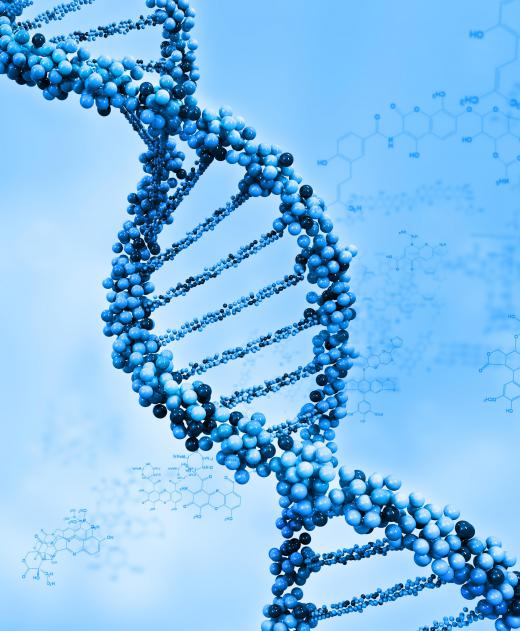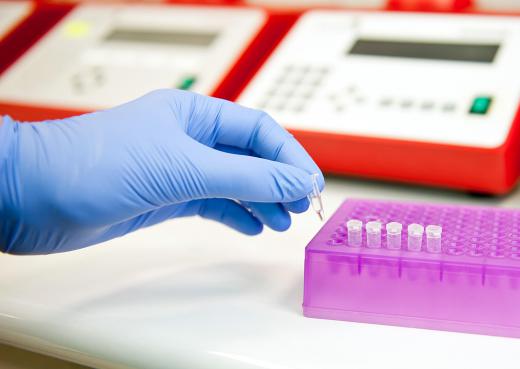What is a Polymerase Chain Reaction?
 Michael Anissimov
Michael Anissimov
The polymerase chain reaction (PCR) uses enzymes to mass replicate a portion of a deoxyribonucleic acid (DNA) strand for easier analysis, such as searching for genes of interest. Like the nuclear chain reaction, the polymerase chain reaction is an exponential process that proceeds as long as the raw materials for sustaining the reaction are available. In contrast to DNA replication in the natural world, the PCR can only replicate fairly small pieces of DNA, with an upper ceiling of about 2-3 kilo base pairs (kb). It uses inanimate enzymes to accomplish its replication effect, setting it apart from other copying approaches that use active organisms.
A modern polymerase chain reaction requires six basic components to work: the DNA segment to be copied, primers to delimit the segment, Taq polymerase to do the copying, DNA nucleotides to serve as feedstock, a chemical buffer environment, and a machine called a thermal cycler. The thermal cycler often holds multiple test tubes with multiple PCRs, each holding 15 to 100 microliters, values just under a cubic millimeter of water. About a hundred nanograms of DNA base are used.

Taq polymerase, the key ingredient for a polymerase chain reaction, is extracted from a deep-sea, thermal vent-dwelling bacterium, Thermus aquaticus. It works well for copying, but not perfectly, making an error about once every 8 million base pairs. Before Taq polymerase, other polymerases were used, but many of them broke down at the necessary temperatures for the reaction to commence. The heating cycle is complicated, but includes temperatures briefly ranging almost all the way to the boiling point, so durability in the polymerase is essential.

The basic steps of the PCR are as follows. All the ingredients are mixed together in a small vial, usually with a volume of 200 micrograms. The mixture is heated to near boiling-point to break the hydrogen bonds in the couple-stranded DNA, creating single strands that are susceptible to copying. This is called denaturing. The longer the strand to be copied, the longer the denaturing process lasts.

The next step in the polymerase chain reaction is called annealing. The primers, which are custom-made, short DNA strands, are designed specifically to bond to sites at the beginning and end of the segment to be copied. If the primers are incorrectly designed or the temperature at this stage is wrong, the primer will bind randomly to the DNA, resulting in the wrong segment copy. Most primers melt at about two-thirds of the way to boiling point, and annealing, a 1-2 minute process, takes place at a few degrees below this.

The last steps in the PCR are called extension and final extension. This is where the magic happens. The polymerase copies the DNA segment rapidly, creating millions and millions of copies in mere minutes. Usually, a cycle consists of all the prior steps, repeated about twenty or thirty times.
The result is a bunch of copied DNA. Polymerase chain reactions have a variety of uses, including paternity testing, determining the presence or absence of a genetic defect or viral DNA, cloning a gene, introducing specific mutations, analyzing the DNA of extinct species or dead persons, “genetic fingerprinting” at the crime scene, and more.
AS FEATURED ON:
AS FEATURED ON:














Discussion Comments
Polymerase Chain Reaction -- amazing! PCR preceded with conversion of sample RNA into cDNA with enzyme reverse. Great work. I like it. Thank you!
How do you know what sequence to use for the primers: if the aim is to discover the sequence of the DNA you're investigating, presumably you don't know the sequence to use for priming?
Very nice explanation.
Real good - easy to read, easy to understand and yet technical!
great description for PCR.
Post your comments